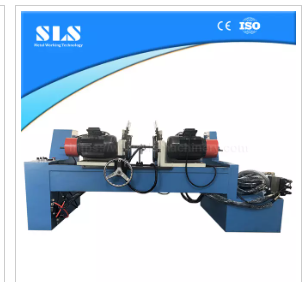In the realm of metal fabrication, the versatility and precision of rotary swaging machines have made them indispensable tools for creating high-quality, uniformly swaged tubes and rods. Industries such as aerospace, automotive, and construction rely on these machines for their ability to produce complex shapes and ensure tight tolerances.
Technological Superiority in Swaging
Rotary swaging machines utilize a rapid hammering force delivered by rotating dies to form metal, a process that allows for extreme precision and minimal material waste. This method is particularly effective for achieving reductions in diameter with high dimensional accuracy. For instance, these machines are capable of adjusting metal tubes from an initial diameter of up to 6 inches down to less than 1 inch, with precision tolerances as tight as 0.001 inches.
Speed and efficiency are among the primary benefits of using rotary swaging machines. They can process lengths of metal at speeds that manual or less automated systems can hardly match, with some machines capable of handling material at rates exceeding 12 feet per minute. This capability significantly enhances productivity, allowing manufacturers to meet high production demands without sacrificing quality.
Cost-Effective Production
The economic advantages of integrating rotary swaging machines into manufacturing processes are significant. By streamlining production, these machines reduce labor costs, as fewer operators are needed to produce more units in less time. Additionally, the precision of rotary swaging minimizes material waste, which can be a substantial saving given the high cost of metals like stainless steel and titanium.
Moreover, the durability and reduced need for maintenance of these machines contribute to lower operational costs over time. The robust design and minimal contact with the workpieces extend the life of the machine components, thereby decreasing downtime and repair expenses.
Enhancing Product Quality
The consistency in production achieved with rotary swaging machines ensures that each piece meets stringent quality standards, which is crucial for applications where safety and performance are paramount. The controlled deformation process enhances the metal's grain structure, improving its strength and resistance to fatigue.
This quality assurance is a vital selling point when dealing with clients who require assurance that their specifications will be met without variation, particularly in sectors like medical devices or aerospace components, where even minor inconsistencies can have severe implications.
Strategic Implementation for Competitive Advantage
Adopting rotary swaging technology positions companies to excel in competitive markets by enabling the production of complex parts that might be unachievable through other means. Businesses can expand their service offerings, tapping into new markets and applications where precision and material properties are critical.
The strategic implementation should include assessing current production lines, potential ROI from the swaging machine, and training for operators to maximize the use of advanced features, such as programmable controls and automated feeding systems.
Explore the capabilities of this sophisticated pipe cone machine, designed to deliver unmatched precision and efficiency in pipe tapering.
Looking Ahead: The Future of Swaging Machines
The future of rotary swaging machines lies in continued technological advancements that enhance control, speed, and customization capabilities. As industries push for lighter, stronger, and more intricate components, the demand for advanced swaging solutions will only grow. Forward-thinking companies that invest in these technologies will find themselves well-placed to lead in innovation and efficiency, driving their success in an increasingly competitive global market.
